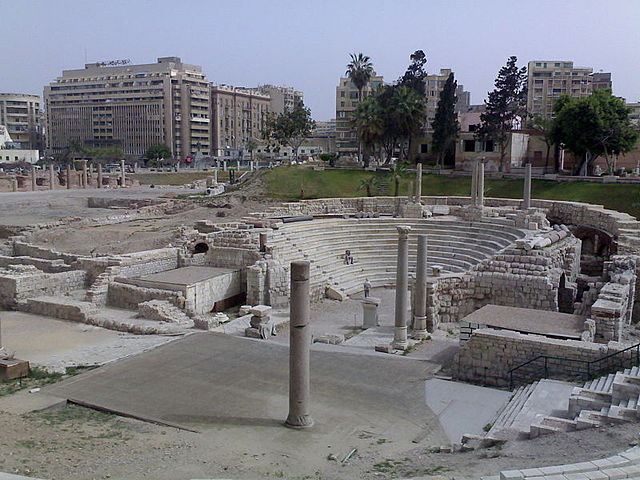The Roman Theater in Alexandria: A Window to History
Alexandria, the pearl of the Mediterranean, is renowned for its rich history and cultural treasures. One of the lesser-known but fascinating landmarks in this historic city is the Roman Theater of Alexandria. This ancient theater offers a unique insight into the life and entertainment of the Romans in Egypt. In this blog post, we explore the history, architecture, and significance of the Roman Theater in Alexandria.
History
Origins and Construction
That Sight in Alexandria was likely built in the 2nd century AD during Roman rule in Egypt. It served as an important venue for performances, musical shows, and public gatherings. The theater reflects the cultural fusion and influence of Roman architecture in the region.
Rediscovery
It was discovered during archaeological excavations in the 1960s. It had long been buried under rubble and sand, which contributed to its remarkable state of preservation. The excavation has provided valuable insights into the Roman presence and daily life in Alexandria.
Architecture
Design and Structure
The Roman Theater of Alexandria is a classic example of Roman architecture. It features a semicircular seating arrangement with space for about 600 to 800 spectators. The seats are made of marble, and the theater’s acoustics are notably good, making it ideal for performances.
Decorative Elements
The stage was once richly decorated with marble embellishments and sculptures. Although many of these elements have been lost over the centuries, the remains still convey the splendor and artistic richness of Roman craftsmanship.
Cultural Significance of Roman Theaters
Center of Entertainment
It was a key center for entertainment and social interaction in Alexandria. It gave residents the opportunity to enjoy plays, music, and other cultural events, playing a central role in the city’s social life.
Testimony to Roman Presence
The Sight stands as an important testament to the Roman presence in Egypt. It illustrates how the Romans brought their cultural and architectural traditions to the territories they controlled and blended them with existing cultures.
Visiting
Location and Access
The Roman Theater is located in the modern district of Kom El-Dikka in Alexandria. It is easily accessible and a popular stop for tourists exploring the city’s ancient sites.
Tours and Experiences
Guided tours are available, providing valuable insights into the theater’s history and architecture. Visitors can also participate in cultural events held occasionally at the theater, blending ancient ambiance with modern performances.
Preservation and Tourism
In recent decades, the Roman Theater of Alexandria has become a major archaeological attraction, drawing thousands of visitors each year. Its preservation is considered one of the finest examples of Roman architecture in Egypt. Ongoing restoration and conservation projects, led by the Egyptian Ministry of Antiquities, aim to maintain the structural integrity and historical authenticity of the site. These efforts have not only protected the Sight but also uncovered additional Roman-era buildings nearby, including baths, lecture halls, and mosaic floors. This broader complex paints a vivid picture of daily Roman life in ancient Alexandria. Today, This sight is included in many Alexandria city tours, offering tourists a chance to walk through the same stone seats and pathways used nearly 2,000 years ago. Informational panels and expert guides help explain the theater’s historical context, making each visit both educational and inspiring. With its central location and unique architectural features, That Sight continues to be a top cultural and historical site in Egypt. Whether you’re passionate about ancient history, Roman design, or Egyptian heritage, this landmark is a must-visit on your 2025 travel itinerary.
Conclusion
The Roman Theater of Alexandria is a fascinating window into the past that highlights the rich history and cultural diversity of the city. Visiting this ancient theater offers not only a glimpse into Roman architecture but also into the cultural dynamics of Alexandria during Roman rule. Whether you are a history enthusiast or simply curious, That amazing sight is a must-see on your journey through this historic city.

